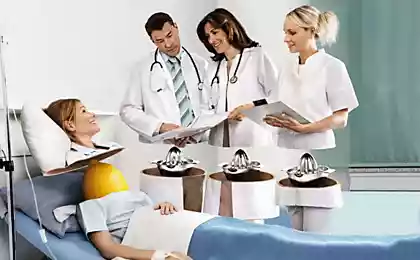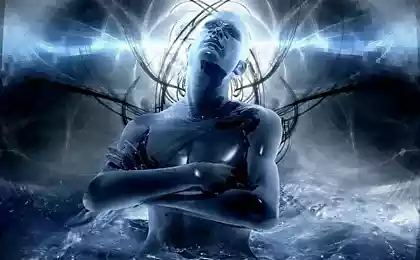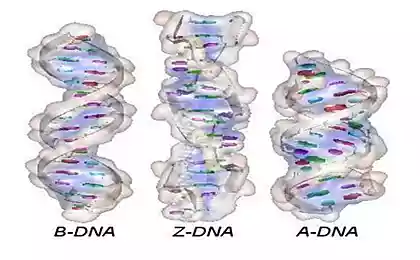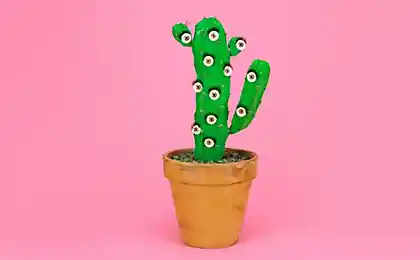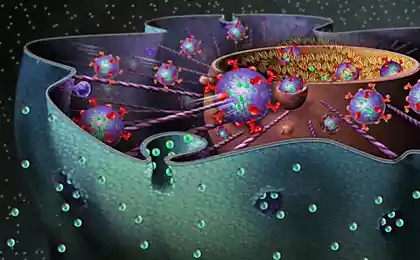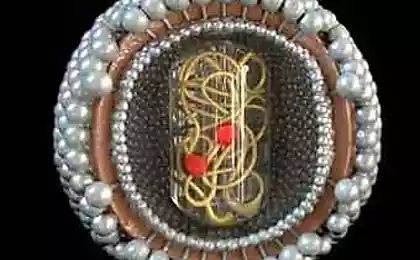528
Not all people are susceptible to HIV
The spread of HIV today is a global biological problem of humanity. Drug abuse, promiscuous sex, unsterile objects in medicine, and sometimes HIV-infected mothers are the main routes of transmission of infection from one person to another. People living with HIV is considered to be the living dead because the human immunodeficiency virus enters the acquired immunodeficiency syndrome and a person can die from a simple infection or wound, as his body is simply not able to anything to fight.

The main task of medical scientists that deal with this disease is to find a method for the treatment of HIV. The first step to finding this method is the invention of drugs which neither support the lives of patients. They do not cure, but only cause addiction, but still support the health of patients that is just as important.
Researchers at Stanford Institute proved that not all people are susceptible to this virus. Let's look at the point of the virus and how it acts inside the body. Once ingested, the virus enters T cells, which are Central regulators of the immune response (they actually provide the body to fight off infection), where the virus binds to surface proteins CCR5 and CXCR4. It turned out that people who have mutations in CCR5 are resistant to HIV. It turned out this way. One person had two problems at once: HIV and leukemia. As you know, for the treatment of leukemia needs a bone marrow transplant, which was done by the person. After the transplant he got rid of as leukemia and HIV. Scientists naturally began to understand why it happened. It turned out that the donor had a mutation in the protein CCR5, which is transmitted to man, who had underwent a bone marrow transplant.

Thus, knowing the possible removal of the virus from the body, it can be treated. Way to make the CCR5 protein is "mutated" is based on technique, California scientists. Their work is associated with research ties in CCR5, ways of penetration and breaking of DNA fragments in a protein. The objective of Stanford scientists is that to make the correct "styling" of the three genes in the DNA in the protein CCR5, which provide resistance to HIV. This triplet provides the strongest protection against HIV infection.
Clinical studies of this treatment will be held in the next 3-5 years. For people who are infected with HIV, it is not guaranteed that they Poltu get rid of the virus, but they can absolutely free to stop immune complete inaction of the organism. Patients will be introduced mutated T-cells.
Source: /users/104

The main task of medical scientists that deal with this disease is to find a method for the treatment of HIV. The first step to finding this method is the invention of drugs which neither support the lives of patients. They do not cure, but only cause addiction, but still support the health of patients that is just as important.
Researchers at Stanford Institute proved that not all people are susceptible to this virus. Let's look at the point of the virus and how it acts inside the body. Once ingested, the virus enters T cells, which are Central regulators of the immune response (they actually provide the body to fight off infection), where the virus binds to surface proteins CCR5 and CXCR4. It turned out that people who have mutations in CCR5 are resistant to HIV. It turned out this way. One person had two problems at once: HIV and leukemia. As you know, for the treatment of leukemia needs a bone marrow transplant, which was done by the person. After the transplant he got rid of as leukemia and HIV. Scientists naturally began to understand why it happened. It turned out that the donor had a mutation in the protein CCR5, which is transmitted to man, who had underwent a bone marrow transplant.

Thus, knowing the possible removal of the virus from the body, it can be treated. Way to make the CCR5 protein is "mutated" is based on technique, California scientists. Their work is associated with research ties in CCR5, ways of penetration and breaking of DNA fragments in a protein. The objective of Stanford scientists is that to make the correct "styling" of the three genes in the DNA in the protein CCR5, which provide resistance to HIV. This triplet provides the strongest protection against HIV infection.
Clinical studies of this treatment will be held in the next 3-5 years. For people who are infected with HIV, it is not guaranteed that they Poltu get rid of the virus, but they can absolutely free to stop immune complete inaction of the organism. Patients will be introduced mutated T-cells.
Source: /users/104
